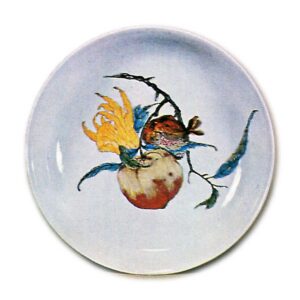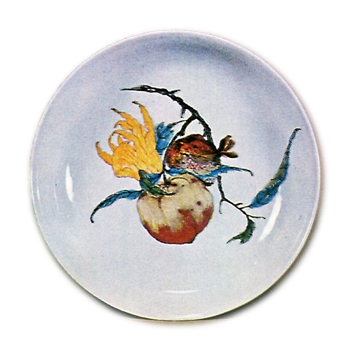
This term refers to the official kilns of Jingdezhen and their kiln ware during the sixty-year reign of Emperor Qianlong of the Qing Dynasty in China (1736-1955). In the early Qianlong period, the famous Tang Ying, who had been stationed here since the Yongzheng era (1723-35) and supervised the kiln work, continued to supervise the kiln work until 1749 (Qianlong 14). When Tang Ying was first appointed to this region, he was under the orders of the Yongzheng Emperor, who was also the Kangxi Emperor’s thirteenth son, Prince Yisheng, and then the Yongzheng Emperor, and he studied the kiln business with great enthusiasm. In fact, the Qianlong period is said to have been the peak of the Chinese ceramic industry, and in terms of technology, it was almost a miracle. In other words, everything imaginable to man could be made of porcelain, and even bronzes, lacquerware, marble, and pebbles were produced to such an extent that it would deceive the true art world. From the standpoint of the fine arts, it may be said that the delicacy and finesse of the work is excessive, but it is unavoidable to criticize that the taste of the work is more natural. The quality of Tang Ying’s wares gradually declined from the mid-Qianlong period onward, and even the techniques are said to have lost their old-fashioned charm. Tang Ying devoted himself to the study of firing techniques, and as a result, he wrote several books, including “Tou Cheng Ji Jing Yuan” and “Tou Jin Shin Guei” (“The Heart of the Potter”). His “Illustrated Guide to Pottery,” which was submitted by order of the emperor in 1743 (Ch’ien-lung 8), is also well known. The new technical methods invented by the Tang dynasty are said to include Western purple, blue, silver, ink, Western oujin, enamel painting, Western oujin, white flowers on black ground, painted gold on black ground, Tianlan, and kiln change. The Tang ware is said to have included “clay of white loam and clay of clay, and thick or thin body. The Jingdezhen Pottery Record states, “The artisan kilns have reached their culmination in this way. According to the introduction by Li Geolai of Linchuan to the Tang Ying collection, the Longzhang and Jin kilns, which had ceased to exist, were restored, and jade and rose colors were introduced. The types of Qianlong kilns vary so widely that it is difficult to describe them all. The famous Kougetsuken is said to have come mainly from the Qianlong kilns. The most common type of signatures on Ch’ien-lung kilns are six-character signatures in seal script, while there are also other types of signatures in standard script and other styles.



